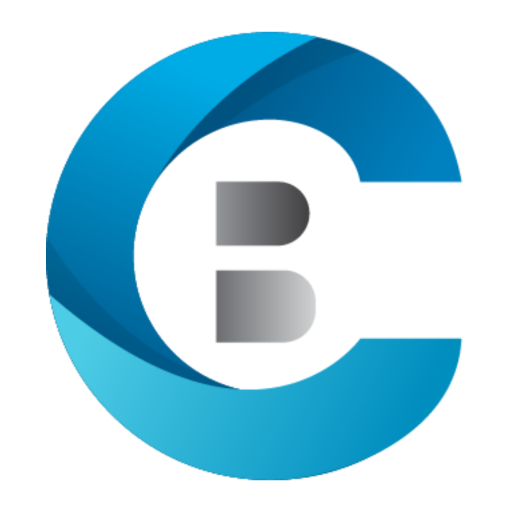What Is ADKAR Model and How To Use It?
Any individual who has investigated changes on the board has known about the ADKAR model of progress for the executives. However, there is a major contrast between understanding what the ADKAR model is and having the option to utilize it.
Breaking out the ADKAR abbreviation into its five results is basic, yet effectively applying this well-known change to the board model requires a more profound comprehension of how to accomplish every individual result.
What Does ADKAR Rely on?
Awareness
Desire
Knowledge
Ability
Reinforcement.
According to the ADKAR change the board model, mindfulness, and want expect to move you out of the present status, where change is required but has not yet started. Information and capacity happen during the progress, and support centers around what’s in store.
Instructions to Apply the ADKAR Model For Organizational Change
Since the ADKAR Model results are situated, working with change by setting clear achievements to be arrived at during the process can be utilized. Each individual engaged with the change should arrive at every objective, however various individuals might arrive at various objectives at various times. For instance, one individual may as of now want to change, while another is as yet becoming mindful of the need to change.
One of the most supportive parts of the ADKAR Model is that its five consecutive objectives recognize areas of obstruction. For example, would someone say someone can’t change since they fail to see the reason why it needs to work out (Awareness), or do they not comprehend how to roll out the improvement (Knowledge)? You will be more ready to direct them through a phase once you sort out which step somebody is stuck on.
Objective 1: Create attention to the need to change.
For certain, conveying the requirement for change is basic, yet making mindful of the change goes past essentially reporting it. For representatives to be mindful of the need for transformation, they should comprehend the thinking behind it as well as come to concur with that thinking.
Start by giving clear clarifications of why the change is required.
Suppose you’re presenting Microsoft Share point. Begin by making sense that when representatives travel or work from home, it’s challenging for them to get to archives and speak with the in-office group. To take care of this issue, the organization will utilize Microsoft’s SharePoint cloud-based help.
Make certain to zero in on the advantages of the change as they apply to individuals impacted. For this situation, SharePoint will permit off-site laborers to get to archives and information without any problem. Doing the switch will smooth out correspondence and take out data storehouses.
In conclusion, consistently urge your group to pose inquiries about how you settled on the change and how it will be carried out, and about different parts of the change cycle plan.
Objective 2: Foster craving to roll out the improvement
Since representatives comprehend the reason why a change ought to be made doesn’t imply that they need that change. For them to take on the change, they should want it. Fortunately, you can cultivate that craving.
Begin by assigning change pioneers. Not exclusively will your change chiefs show public help for the change, yet they most normally associate with individuals who will be impacted by it. Pick change pioneers who can connect with how day-to-day schedules will be impacted so they can offer explicit help and direction.
To cultivate want, change pioneers need to become explicit about the advantages of the change as they apply to specific people or groups. Try not to promote benefits for the organization.
You might need to supplant three separate devices with Salesforce because it sets aside your cash, yet that is not an extraordinary inspiration for workers. All things considered, present the change as something that will help them in their everyday work lives. For this situation, Salesforce will make it simpler for them to run reports, screen client connections, and execute promoting techniques across the board place, saving them the difficulty of utilizing three distinct apparatuses.
While encouraging longing, protection from change is a significant deterrent. Obstruction is normal, yet you want to comprehend the central justification behind it. Are individuals frightened that they don’t have the right stuff to roll out the improvement? Is that they are stressed over what it will mean for their work obligations? Workers baffled by the additional work expected to gain some new useful knowledge?
When you comprehend the underlying driver of the opposition, address it head-on and, if important, make acclimations to your change execution plan.
Objective 3: Provide information on the most proficient method to change
The information achievement in the ADKAR Model is basically about preparing and training. To start the change, your group should figure out how their obligations, abilities, instruments, and cycles will be influenced.
Considering that everybody should arrive at every achievement separately, information assembling should be explicit. Give information that applies straightforwardly to each group’s or alternately person’s liabilities. For instance, assuming you are presenting new programming, the IT group might be answerable for getting everybody positioned to utilize it, while different offices should zero in additional on the most proficient method to utilize the product. The information expected to perform unmistakable jobs in the change is different even though the general change might be something very similar.
Carve out the opportunity to assess what extra abilities, apparatuses, and obligations the change will require. Doing so will permit you to design your change plan around the fundamental ability improvement. Furthermore, recall: Too much change at the same time can be bumping and lead to opposition. If your change expects representatives to gain proficiency with a lot of new material as well as expert new abilities, execute the change continuously.
One more method for expanding cognizance is to utilize an assortment of imaginative worker-preparing techniques:
Customary homeroom preparing
Work shadowing/tutoring
Recordings
Blog series
Intuitive independent learning
Information building ought to go past working with the change. It is similarly critical to give information that permits your group to own the change as far as possible.
Objective 4: Ensure that workers can roll out the improvement
Despite how well workers know how to follow through with something, having trust in their skills decides if they would be able or try and will follow through with something.
The Prosci change the board technique utilizes games to make this statement: While a lot of baseball fans comprehend the repairmen behind rattling, not every one of them would make incredible pitchers.
To overcome any issues among information and capacity, put change pioneers responsible for training people or groups. Task change pioneers with gathering criticism from their groups and drawing possible issues and snags out into the open.
Active preparation is additionally incredibly important. By allowing groups an opportunity to try out the change before completely carrying it out, you offer them the chance to construct certainty. Also, you can screen execution and give itemized input. For bigger scope changes, consider carrying out them in stages so you can recognize issues from the beginning and make acclimations to your execution plan.
Objective 5: Reinforce the change
Beginning energy might get you to the end goal, however, you won’t cross it assuming that representatives begin depending on old propensities. When new cycles are set up, new programming is introduced, or the new authoritative outline is true and supports the change long after its execution.
Celebrate accomplishments during and after the change so you can fabricate and keep up with excitement. Attempt inventive inspiration procedures like these:
Zendesk’s Champagne Campaign includes laying out little objectives for workers and afterward perceiving the accomplishment by putting a little container of champagne in their work areas iDone This’ week after week sharing time video call, which gives an open door to workers to share what they are pleased with achieving. Right mix-ups and unfortunate conduct in private when individuals slip once again into old propensities. Then again, give acclaim openly with the goal that the whole association can get together to celebrate.
Meanwhile, keep on gathering input. The change cycle might be “finished,” yet representative criticism is as yet significant. Pay attention to workers to recognize trouble spots and see where additional help would be advantageous.
Finally, remember time for support for your change in the executive’s plan. You ought to keep observing and supporting the change all through Q4 assuming that you mean to be completely exchanged over to SharePoint toward Q3’s end. Change can’t be set for the time being; support endeavors ought to work out positively past the objective fruition date.
Speed up change by looking for help
The ADKAR model gives an incredible structure to many kinds of authoritative change. Nonetheless, that doesn’t mean you ought to rely exclusively upon the ADKAR to change the boarding procedure. Every achievement might need extra help from change pioneers, change the board programming, and representatives, so be prepared to search for that help.
You may likewise consider joining the ADKAR model with other laid-out changes in the executive’s models. To have a structure to deal with close-to-home responses, the ADKAR model could be matched with individual-driven techniques.
Change takes time, yet Bytecasting attempts to speed up changes.
Contact Bytecasting to talk about how we can assist with building information, increment capacity, and support changes through our altered independent learning and computerized reception apparatuses.
Click here to know more details
Click here for more Blogs


